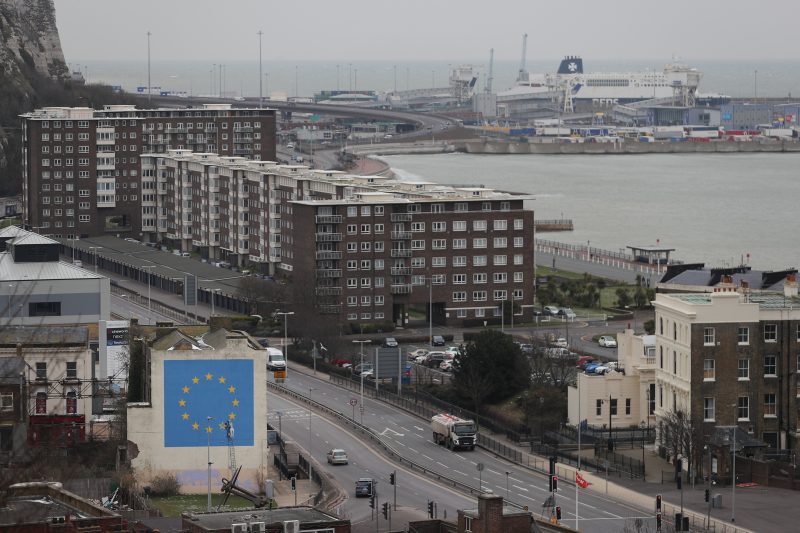Brexit votes: the options
How to keep trade flowing after Brexit is a big headache (Daniel LEAL-OLIVAS)
London (AFP) – After a dramatic vote in the British parliament on Monday, MPs are now set to hold a series of votes later this week on different Brexit options.
Three years after Britain voted to leave the European Union, MPs appear no closer to agreeing on how — or even whether — their country should do so.
Here are the main options being mooted:
– Norway –
Energy-rich Norway is in the European Economic Area (EEA), meaning it benefits from membership of EU’s single market but does not have a say in the making of its rules.
It must also allow the free movement of goods, capital, services and persons — the EU’s four freedoms — with EU member states.
The big advantage for Britain in such a scenario would be that its financial hub in London remains undisturbed and trade with the EU continues unimpeded.
But critics say it would leave Britain a hostage to EU rules, and also fall foul of the promise of the Brexit campaign to limit immigration.
– Canada ‘plus plus plus’ –
The EU’s recent accord with Canada, the Comprehensive Economic and Trade Agreement (CETA), is considered the blueprint for the EU’s trade deals going forward.
The deal touches on all aspects of the economy, including health and safety norms, and not just the usual cuts to tariffs and import quotas. The plus elements refer to this option going much deeper than the EU-Canada deal.
Both parties would negotiate an agreed level of regulatory cooperation in sectors such as finance, aviation and autos.
– No-deal –
If no alternative course can be agreed, Britain will default to “third country” status with the EU, with trade relations run on World Trade Organization rules.
This involves tariffs and increased barriers that could disrupt the seamless supply chains that connect Britain and the EU.
While the EU’s average tariff rate for third countries is low – around 1.5 percent — they are bigger in certain strategic sectors: for cars, the rate is 10 percent.
It is unlikely that British products could enter the EU without further border checks.
– Second Brexit referendum –
Many Remain-backing MPs see a second referendum as the most viable path towards preventing Brexit.
However, there has never been clarity over what the referendum would ask, other than the cross-party People’s Vote campaign insisting that staying in the EU must be one of the choices.
A backbench Labour compromise proposal would see the main opposition party vote through any government deal, on the condition that it was put to a referendum.
However, a majority of MPs earlier this month voted against postponing the Brexit date in order to hold another referendum.
– The deal, with a customs union –
The existing divorce deal but keeping Britain in the EU customs union.
Committing fully to the customs union would end the dispute over the deal’s provisions for the Irish border, ensuring it remains open after Brexit.
This option is favoured by the main opposition Labour Party but the Conservative Party manifesto pledged to take Britain out of the customs union and the single market.
– Cancel Brexit –
The most dramatic option would be to cancel Brexit altogether by revoking Article 50, the departure mechanism that set a two-year clock ticking down to March 29, Britain’s supposed exit day.
Disclaimer: This story is published from a syndicated feed. Siliconeer does not assume any liability for the above story. Validity of the above story is for 7 Days from original date of publishing. Content copyright AFP.


